Archery might seem like a sport that requires only steady hands and sharp eyes, but experienced archers will tell you that precision does come at a cost. Drawing a bowstring, maintaining a consistent stance, and overcoming environmental difficulties can strain the body over time.
Red light therapy (RLT), also known as photobiomodulation, has emerged as a popular modality among athletes, delivering anti-inflammation benefits, improving muscle recovery, and supporting overall well-being. But can archers actually get something from this technology? The answer, in all caps, is YES! Read on to find out how RLT can be a game-changer for archers.

Targeted Joint & Muscle Recovery for Archers
Managing Rotator Cuff Strain from Repetitive Drawing
Shoulders play a major role in archery, especially the rotator cuff, which works to stabilize the shoulder joint through the draw cycle. Overuse and repetitive strain injuries are quite common, particularly as many competitive archers train multiple times per week. If not addressed properly, a rotator cuff strain can also cause short-term discomfort and stiffness and long-term mobility issues[1].
Red light therapy helps by:
- Decreasing inflammation of the shoulder joint
- Encouraging collagen formation for speedy tissue repair
- Enhancing blood flow for fast-track recovery
Archers with chronic shoulder fatigue can use RLT after each training session to alleviate soreness and speed up muscle recovery, allowing them to train more consistently and not hit a wall.
Wrist Stabilization Through Photobiomodulation
The wrist is the other key joint in archery. The challenge of stabilizing the bow hand and executing a smooth release requires skill and power whether you shoot a recurve or compound bow. The repetitive motion, along with the stress of holding a fully drawn bow, can irritate your tendons and cause them to stiffen.
Red light therapy uses various red and near-infrared light wavelengths for healing[2] and has been shown to:
- Add flexibility to wrist tendons and ligaments
- Increase flexibility and range of motion
- Avoid chronic overuse of the wrist joint
Integrating RLT into a recovery routine can help archers stabilize their wrist structure and mitigate discomfort, which allows for smoother and more controlled shot execution.
Full-Body Maintenance for Competitive Archers
Preventing Lower Back Stress in Archery Stance
Archery stance puts a lot of stress on the lower back. It keeps the upper trunk of the body stable, which is arguably the most important part of the shooting process, as it requires that archers engage their core and lower body to minimize movement in the torso. This repeated stress can lead to lower back pain and muscular imbalances over time.
Using red light therapy (RLT) is a natural, drug-free way to promote the health of your lower back. Its benefits include:
- Minimizing inflammation in the lower back
- Promoting tissue recovery in overworked muscles
- Improving blood circulation for quick recovery
Using RLT in their post-workout protocol, archers can relieve muscle soreness, lower the risk of sore muscles developing into chronic pain, and improve their posture[3]. This enhances both endurance and muscle control for shot accuracy, allowing archers to perform optimally.
Enhancing Core Stability with Pre-Training Irradiation
You need a good core to shoot correctly. Weak abs and obliques can cause instability, which hinders accuracy and consistency.
The benefits of applying red light therapy to your abdominal muscles before training include:
- Enhance blood flow and muscle activation
- Improve core response through enhanced endurance
- Limit our risk of cramping and fatigue
RLT can be utilized as a warm-up tool before training, which will prime the core muscles, allowing archers to remain controlled and steady during shots.
Environmental Adaptation Strategies
Combating UV Exposure During Field Archery
Field archery is usually done in the sun, giving archers hours in the sunshine. In general, sunscreen is critical, but UV radiation can still cause skin damage, premature aging, and oxidative stress.
Red light therapy is proven to[4]:
- Mitigating the oxidative stress of UV exposure
- Helping heal skin and minimize sun damage
- Maintaining skin health by stimulating cell repair
Outdoor archers who engage in RLT post-training may enjoy healthier skin tissues that prevent or reduce the impacts of long-term sun damage.
Immune Support During Tournament Seasons
Archers travel extensively and face arduous training schedules during competition seasons, rendering them prone to stress-induced immune suppression.
Red light therapy is associated with:
- Enhanced mitochondrial activity which increases energy levels
- Lifted activity of white blood cells that protect from infections
- Decreased cortisol levels that can contribute to stress-induced fatigue
Implementing RLT during peak training or competitive phases will allow archers to lug out at peak health when it counts.

Long-Term Athletic Performance Optimization
Preventing String Hand Dermatitis in Compound Bow Users
Specifically, compound bow archers are subject to stitches of friction and pressure on their string hand as they regularly come into contact with bowstrings, release aids, and grips. Over time, this can result in skin irritation, calluses, and even dermatitis.
Red light therapy can:
- Speed up skin healing and reduce inflammation
- Boost collagen build-up for skin to be resilient
- Promote tissue regeneration in the affected parts
An archer’s hands take a beating from repetitive motion and RLT can keep them in perfect condition, eliminating discomfort and allowing for a more consistent release.
Enhancing Visual Acuity for Target Acquisition
Vision is arguably the most important skill in archery. Being able to rapidly latch onto a target, gauge distance, and keep that all in focus has made the difference between tens of ’shots hitting the bull’s eye versus flying off target.
Red light therapy has been researched for its impact on eye health, revealing some potential positive effects, including:
- Improving retinal cell mitochondrial function
- The strain on your eyes from staring for a long time
- Night vision and contrast sensitivity enhancement
For archers, incorporating RLT into their daily routine may help improve vision acuity and depth perception and decrease eye fatigue, particularly during lengthy competitions.
Final thoughts
Archery is a sport of precision, patience, and physical endurance. Though training and technique are key, recovery and injury prevention may be an archery player’s most important factor for longevity. Science backs red light therapy as a non-invasive enhancement to muscle recovery, joint stability, immune function, and even vision.
RLT is a novel, simple, low-cost tool that, when implemented into both training and recovery protocol, has the potential to help archers stay at the top of their game, injury-free, and ready to compete for years to come. Give red light therapy a try—you may find yourself shooting with more power, accuracy, and endurance than ever before.
References
- Alberola-Zorrilla, Pilar et al. “Where do archers hurt? Epidemiology of injuries during archery practice.” Physiotherapy theory and practice vol. 40,6 (2024): 1343-1350. doi:10.1080/09593985.2022.2136507
- Okuni, Ikuko, et al. “Low-level laser therapy (LT) for chronic joint pain of the elbow, wrist, and fingers.” Laser therapy vol. 21,1 (2012): 15-4. doi:10.5978/islsm.12-OR-04
- Foley, John et al. “830 nm light-emitting diode (led) phototherapy significantly reduced return-to-play in injured university athletes: a pilot study.” Laser therapy vol. 25,1 (2016): 35-42. doi:10.5978/islsm.16-OR-03
- Avci, Pinar, et al. “Low-level laser (light) therapy (LLLT) in skin: stimulating, healing, restoring.” Seminars in cutaneous medicine and surgery vol. 32,1 (2013): 41-52.



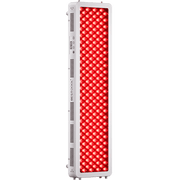









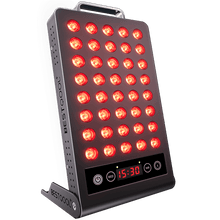
 Small
Small
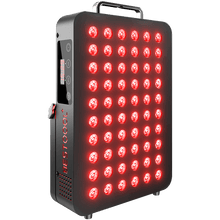
 Moderate
Moderate
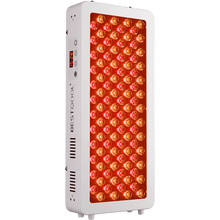
 Moderate
Moderate
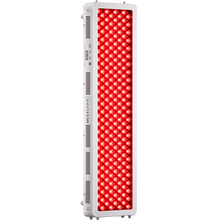
 Moderate
Moderate
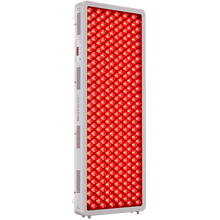
 Full
Full



